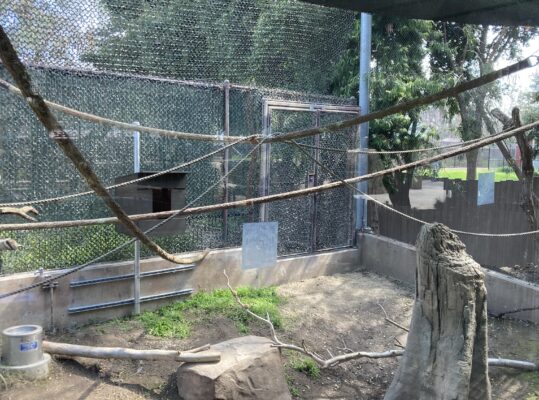Week 2: The First Of Many Updates
March 17, 2023
The first new piece of furniture has now been added to the red ruffed lemur exhibits! Both exhibits now feature a nesting box, which will give them a more secluded place to rest. I noticed throughout my initial observations that the lemurs liked to sit in places that gave them room to lie down. This explains why they spend so much time on the ground or in the tunnel to their night house. Both of these areas, while not a place where they naturally rest, provide more comfort and are therefore sometimes chosen over the small trees and branches available. Since Happy Hollow has limited space, only smaller vegetation will fit. These nesting boxes will simulate some of the nooks and crannies of the massive trees that are present in their natural environment.
In addition to providing another spot to comfortably rest, nesting boxes are a key part of red ruffed lemurs’ reproductive process. In the wild, the females will build nests both as the birth site and a place to keep the baby safe while the mother is away. As red ruffed lemurs are critically endangered, Happy Hollow Zoo is part of a program to help protect this species. Having nesting boxes will encourage mating and advance their conservation efforts.
Along with the nesting boxes, thick ropes, which I will call vines going forward, have been added to both exhibits. These vines are a means of easily traversing the space in the air. Thinner ropes were already present, but they were not super stable.
Ally and Razoky’s Exhibit


Meva’s Exhibit (bonus points for sunbathing Meva)


Sources
- Baden A. L. (2019). A Description Of Nesting Behaviors, Including Factors Impacting Nest Site Selection, In Black-And-White Ruffed Lemurs (Varecia Variegata). Ecology And Evolution, 9(3), 1010–1028. Https://Doi.Org/10.1002/Ece3.4735
- (2023, February 28). Red-Ruffed Lemur (Varecia Rubra) Fact Sheet: Reproduction & Development. San Diego Zoo Wildlife Alliance Library. Https://Ielc.Libguides.Com/Sdzg/Factsheets/Redruffedlemur/Reproduction
